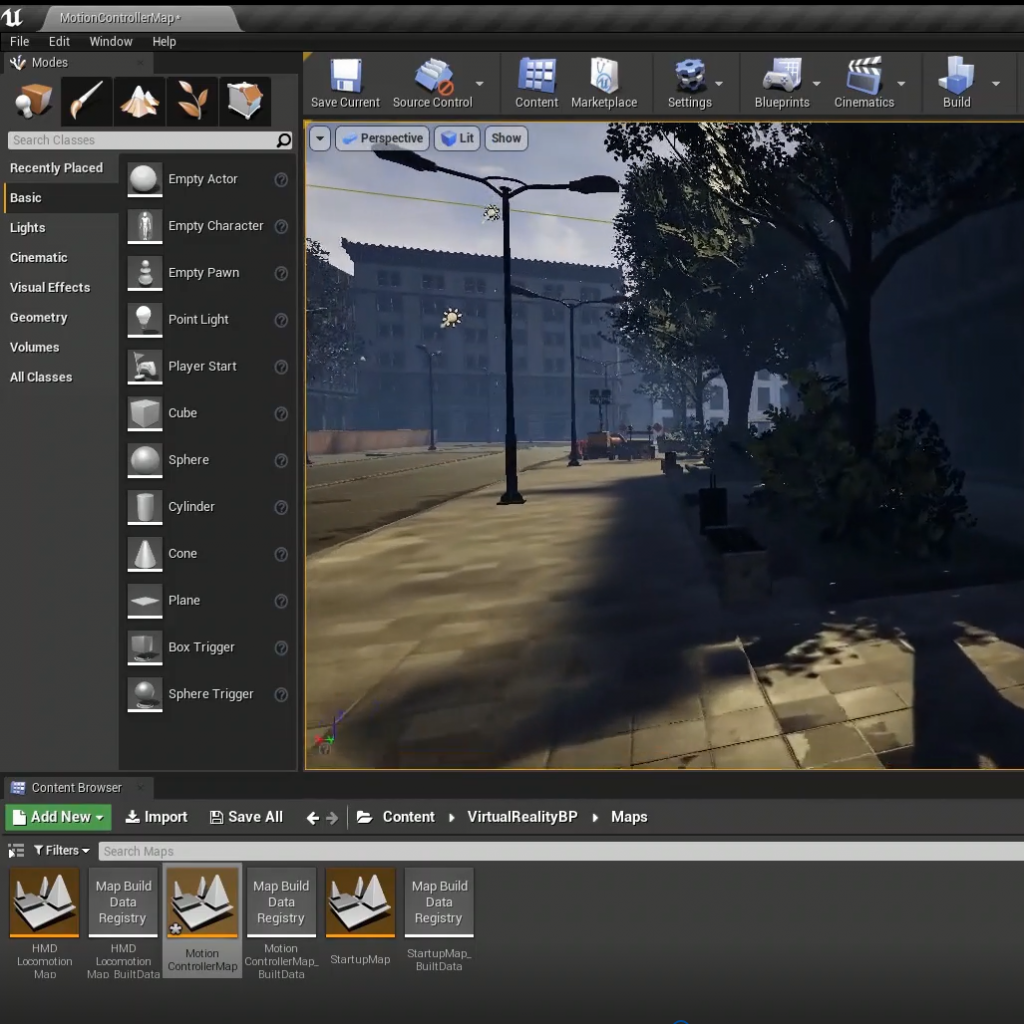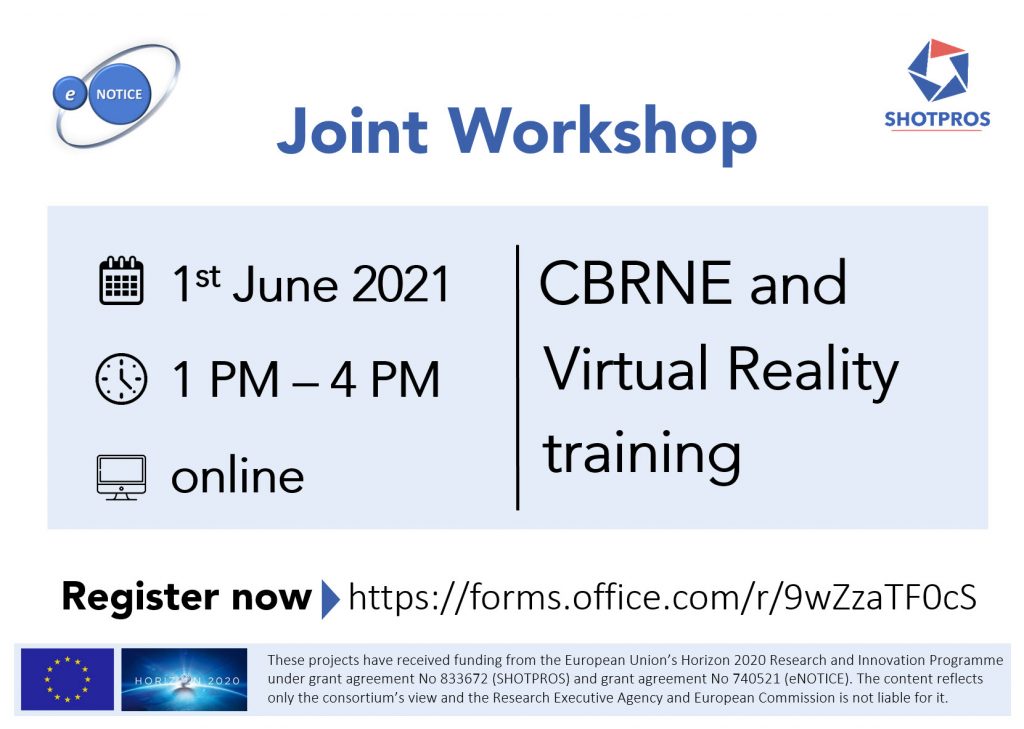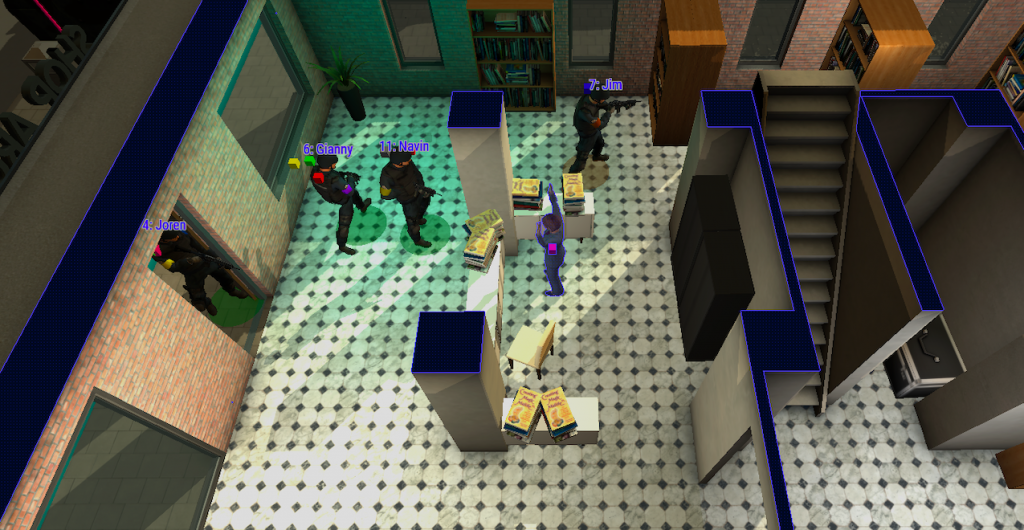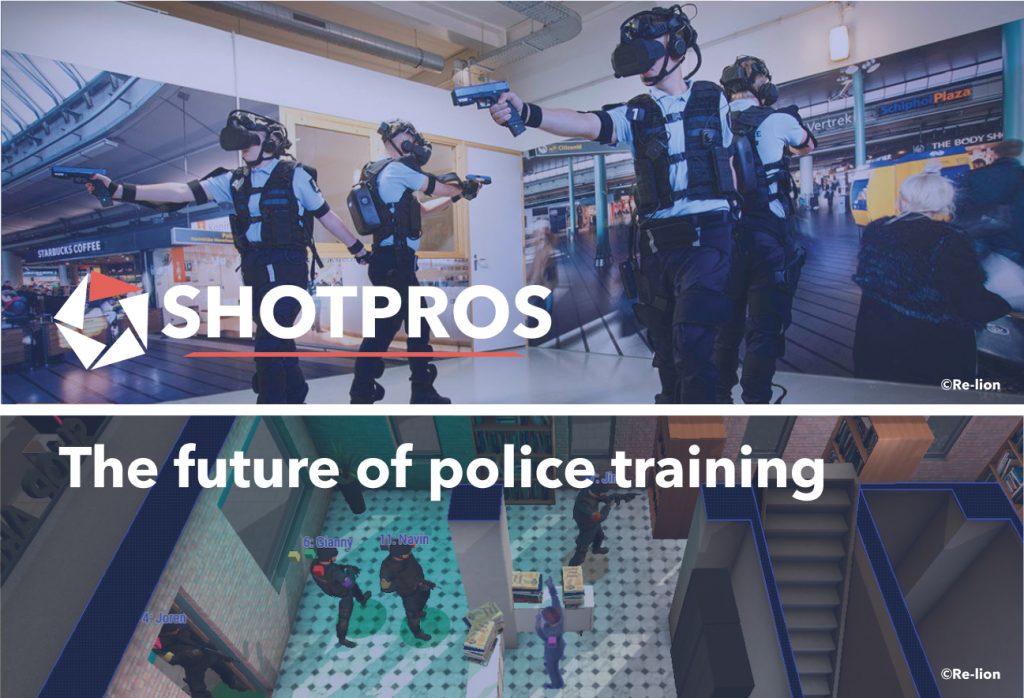Virtual Reality has a high potential in the area of law enforcement training and is gaining increasing acceptance. One of the reasons is, that the technology allows for the creation and real-time adaption of an unlimited number of scenarios. Those scenarios can contain persons or objects that cannot be included in traditional scenario-based training. This article provides an overview of what needs to be considered for the creation of a VR scenario.
Collaboration in the SHOTPROS project
The SHOTPROS project has already created one indoor scenario and is currently working on the creation of an outdoor scenario. It is critical that the scenario meets the needs of the law enforcement agencies, and that a certain variability can be introduced during the training. The scenario needs to introduce the desired level of stress in trainees so that an adequate learning effect can be achieved. That requires the collaboration of several partners: the law enforcement officers who express their needs and expectations for the scenario, the research partners who identify stress cues and other factors to reach the ideal stress level and the technology partner that develops the necessary features and scenario elements. An important part of the SHOTPROS project and this network is thus bringing all of these experts together to create an evidence and experience-based scenario.
Agile methodology
The SHOTPROS project is using an agile methodology to do this and to keep improving the VR system. The scenarios are created by conducting end user workshops, regular feedback sessions and filling our decision trees. The decision tree is put together and describes the scenario, the possible choices a trainee in the scenario, and the outcome of those choices. The technology partner can then use the decision tree in the creation of the scenario. After several development, regular feedback sessions and continuous improvement, the scenario is ready to use for training.
More information about the agile methodology can be found here.





